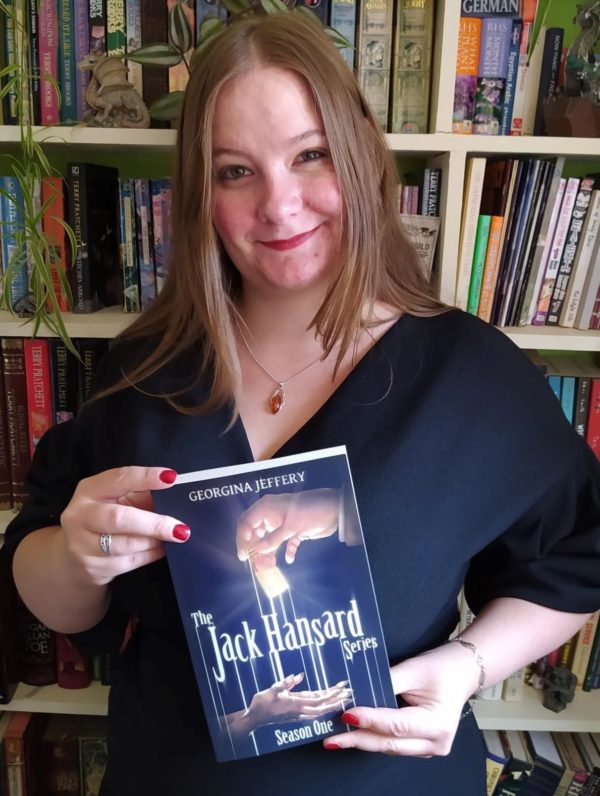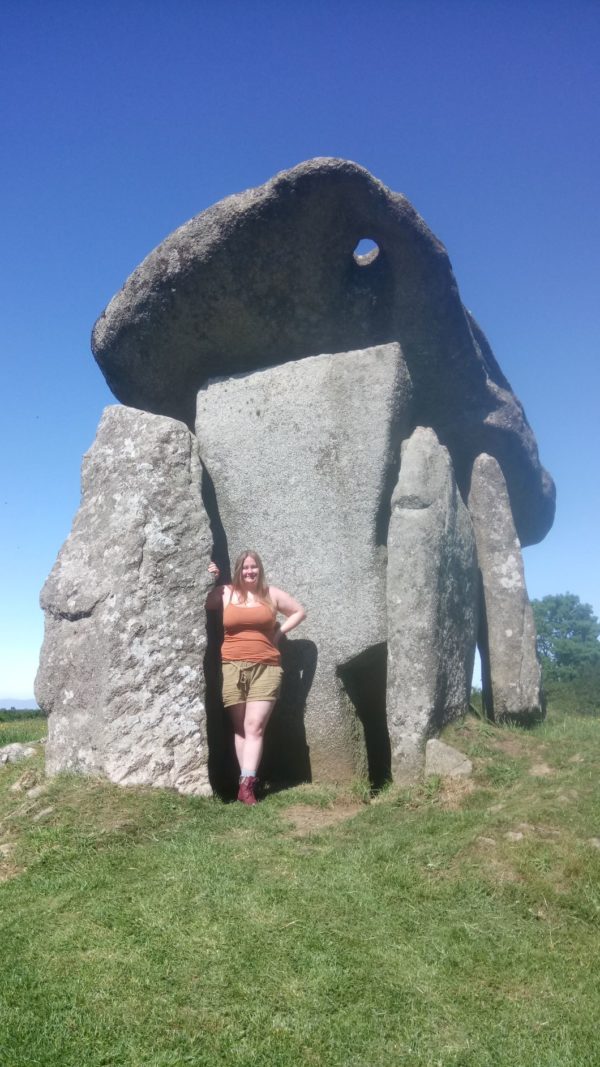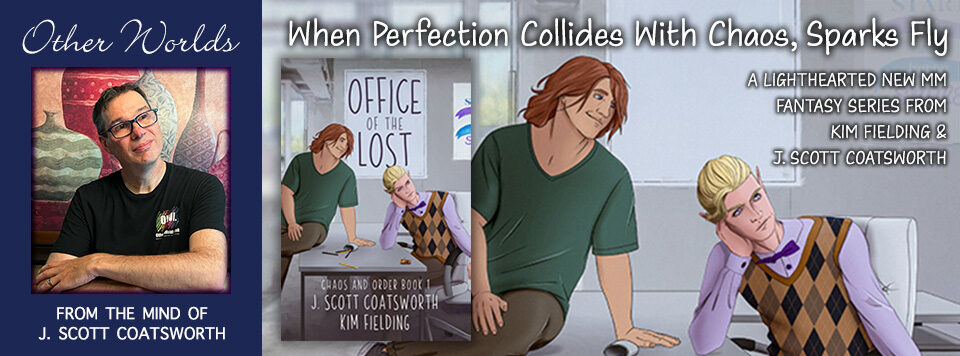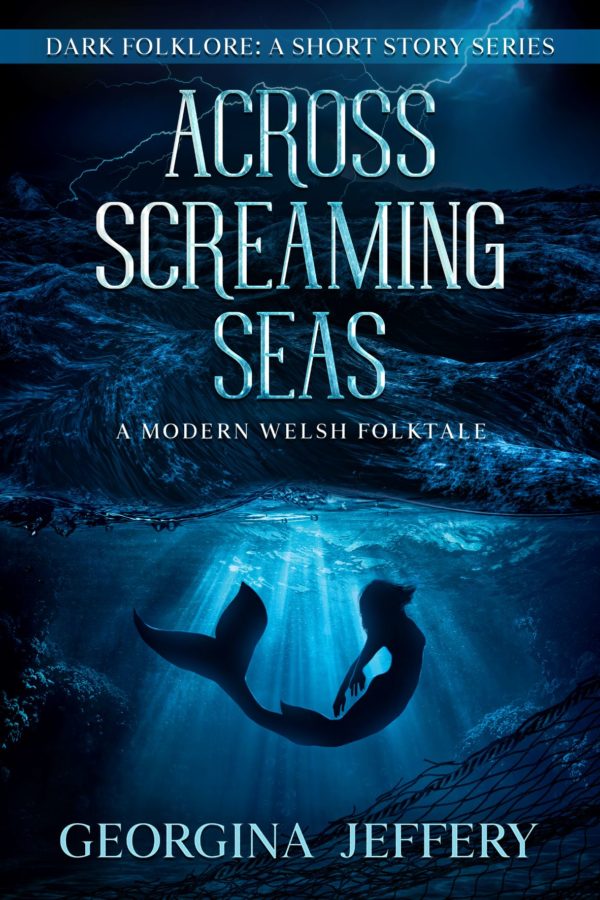
Welcome to my weekly Author Spotlight. I’ve asked a bunch of my author friends to answer a set of interview questions, and to share their latest work.
Giveaway
Grab The Jack Hansard Series: Season One for FREE from Smashwords today! This offer is only available to readers of this blog for the next 48 hours via this exclusive coupon code: FF59G
Go to the book on Smashwords below and enter the code at checkout to reduce the price to FREE!
The Jack Hansard Series: Season One on Smashwords: https://www.smashwords.com/books/view/1049448
Today: Georgina Jeffery is a British author of speculative fiction. Her stories often blend elements of fantasy, humour, and horror, and tend to reflect her fascination with folklore from around the world. You’ll find mythical beasties, malevolent spirits, and eldritch magic in a lot of her writing.
Georgina’s work can be found in a variety of anthologies and journals, including The NoSleep Podcast, Sci-Fi Lampoon, Unbreakable Ink, The San Cicaro Experience, and Copperfield Review Quarterly.
Visit Georgina’s website: https://georginajeffery.com
Thanks so much, Georgina, for joining me!
J. Scott Coatsworth: How would you describe your writing style/genre?
Georgina Jeffery: My roots are in contemporary fantasy and humour – I like a good turn of phrase, sharp dialogue, and the ability to explore abstract concepts in a slightly wacky fashion through the mediums of fantasy and magic.
These days I do prefer a darker tinge to my stories, however. While I wouldn’t describe any of my books as ‘gritty’, I do enjoy adding an undercurrent of horror and suspense. This is especially easy to do with folklore themes and mythical beings, around which so much of my writing revolves.
You won’t find any friendly fairies in my fairy tales. But you will find crotchety coblyns, morose shellycoats, murderous kelpies, and a very dangerous unicorn.
Of my two main series, my Jack Hansard books are on the funny side, while the Dark Folklore stories have a more serious tone, verging on horror.
JSC: What was your first published work? Tell me a little about it.
GJ: My first book was The Jack Hansard Series: Season One, an episodic urban fantasy which I published in 2020. This book began as a free serial on my website nearly five years beforehand, and was a labour of love to get it polished up for ‘proper’ publication.
The main character, Jack Hansard, is an occult salesman on the supernatural Black Market. He’s a perpetual opportunist and occasional con man, forever chasing the next Big Thing. He finds it in Ang, a Welsh coblyn, who hires him to investigate the disappearance of her friends. Her payment: a batch of incredibly rare bluecaps, a type of underground treasure-seeking spirit. But, when the bluecaps are stolen by an invisible thief, the pair find themselves drawn into a mystery far bigger than simple stolen merchandise or missing coblynau . . .
It was a hell of a lot of fun to write, but a pain in the ass to figure out how to package into a book. I’m pleased with the result though, and my readers seem to be, too. Season One collects the first fifteen episodes together and fulfills the first major plot arc of the series, which then continues in Season Two.
JSC: Have you ever taken a trip to research a story? Tell me about it.
GJ: I draw a lot of my character and plot ideas from folklore connected to the locations where the story is taking place. Season Two of Jack Hansard takes place largely in Cornwall, where Jack and Ang encounter knockers, piskies, and a horrifying Green Man.
While writing those episodes, I had the good fortune to spend a holiday in Cornwall and visit some of the same sites as my characters. The best of these was Trethevy Quoit, a prehistoric portal tomb constructed out of massive stone slabs.

It was great to get a sense of the scale of this monument, which my characters would be climbing into and using as a literal portal to another plane. I also discovered a certain magical property of the granite capstone, which I otherwise would never have guessed: reflective specks of mica covered the surface, making it positively sparkle in the sun. You can bet I added that as a supernatural detail into the story, ASAP.
I also got to see a lot of other cool monuments in the landscape like stone circles (often said to be people turned to stone as punishment for dancing or playing games on a Sunday) and the gigantic ‘Cheesewring’ formation of stacked stones (which legend says was formed during a rock-throwing contest between a man and a giant).
My favourite find was within The Hurlers, one of the stone circles on Bodmin Moor. At the centre of the circle stood one upright stone, about waist-high. Someone had placed an iron horseshoe on top. This horseshoe was filled with coins – currencies from all over the world – and bunches of picked flowers lay on the ground around it.
It was so clearly a place of modern offering and ritual. I was enchanted by the thought of other walkers like myself feeling compelled to leave some mark of their presence behind on the small stone altar. Such a human thing.
JSC: Do your books spring to life from a character first or an idea?
GJ: Quite often my starting point is place. Locations come with quirks and history and folklore which I love to dig into to shape a story.
Although the concept for Jack Hansard himself came from a simple character drabble (“Let’s see if I can write a Del Boy-esque sales pitch for a magical con man hawking a batch of corporeal inspiration as his merchandise.”) the full-length series only emerged because I fell in love with the places in it, and the legends I could draw out of them. Half my episodes started with the thought process: “Ooh, what if they visited here…”
Season One starts with Jack in peril in the seedy underbelly of London, winds into rural Shropshire to pick up our secondary main character, then darts north to the Lake District for some good old-fashioned monster mysteries. After a few more detours, the book eventually comes full circle, ending up back in London for a showdown inside the British Museum between Hansard, his rivals, and an angry Egyptian god.
One day, I’ll do a tour of Britain following Jack’s footsteps through the series. It’ll be one hell of a journey.
JSC: Who has been your favorite character to write and why?
GJ: A toss up here between Jack and Ang. Most of the Jack Hansard episodes are told in Jack’s voice, which is quick-witted and sometimes eloquent to the point of absurd. It’s always fun to write a character who naturally gets himself into trouble: half the time I can feel him digging his own holes for me.
On the other hand, Season Two of the series contains a few episodes written in Ang’s voice, which is a very unique POV to explore. Ang is a coblyn. Not quite three feet tall, she’s a creature from mining folklore who grew up in dark tunnels alongside fast-developing human industry. She’s very down to earth, quick to anger, and has a sharp tongue. She’s also Welsh, and I admit to having too much fun playing about with Welsh cuss words and slang in her speech.
But really it’s her years of experience and particular lens for viewing humanity that I adore when writing her. She sees things that Hansard doesn’t. Feels things when he forgets to. She speaks up for his conscience, when otherwise it would be too quiet to hear.
JSC: What are some day jobs that you have held? If any of them impacted your writing, share an example.
GJ: I spent many years working in a Victorian living history museum.
This museum is an open air site where they’ve moved, restored, and reconstructed a variety of period buildings in order to simulate a small town on the east Shropshire coalfield, around the year 1900. Staff dress in period costume, and demonstrate a mixture of traditional social roles and skilled trades to visitors.
I ended up working in most areas of the ‘town’ at one time or another, and have variously been a Victorian candlemaker, printer, plasterer, chemist, pit girl, and more…
Being surrounded by so much tangible history and lived experience, it’s easy to see why I gained a sudden interest in industrial folklore. Mining spirits such as knockers, coblynau, and bluecaps remain among my favourite folklore subjects today.
I will also admit to writing many of the first Jack Hansard episodes during quiet winter shifts in the murk of the candle factory…
JSC: If you could tell your younger writing self anything, what would it be?
GJ: DO IT NOW.
Louder for everyone in the back: Do. It. Now.
Wanna write a book? Do it now. Wanna query a top literary agency? Do it now. Wanna self-publish? Do it now.
Technically, I wrote my first book relatively fast. I then wasted a lot of time agonizing over whether it was good enough – whether I was good enough – to let it out into the world for real. Five years, to be exact. Sometimes I look back and consider how much farther ahead I might be, if I’d just taken myself a little more seriously a little earlier on.
But, to caveat this, we all probably owe our younger selves some slack. Those five years weren’t wasted, really. I learned things that eventually shaped me into being able to take it further. I learned how to craft a query letter for agents. I learned how to accept rejection. I learned how to improve my craft. I learned how to view my work with confidence.
And, eventually, I learned how to ‘do it now’.
JSC: What are you working on now, and what’s coming out next? Tell us about it!
GJ: While the first draft for Season Three of the Jack Hansard books is still percolating in my brain, I’ve turned my attention to releasing a series of shorter, darker novelettes on a faster schedule. Each book in my Dark Folklore series is a standalone story centered on a place and a piece of folklore I’ve reframed for a sinister fairy tale vibe.
Beyond Thundering Waters takes place in a breathtaking Norwegian valley, where a grieving daughter unwittingly makes a supernatural deal with a malevolent huldra. Within Trembling Caverns follows a grandmother who foolishly cares for an old dragon on the outskirts of Krakow, in Poland. Across Screaming Seas brings us to face to face with a morgen, a Welsh mermaid, when a well-meaning diver becomes trapped in her lair.
The forthcoming book, Among Strangling Roots, is a rural horror story set on a dilapidated farm in northern Germany. Its supernatural antagonist, the Rye Aunt, is a terrifying, tar-stained shadow that stalks the fields and steals away naughty children. It’s available for preorder right now, due for release at the end of September. 😉
And now for Georgina’s new book: Across Screaming Seas:
A dark fairy tale in a modern Welsh setting. The lives of a diver and a reclusive mermaid collide. Will one be the death of the other?
When Erin comes to the aid of a sea creature caught in fishing nets, she’s shocked to discover she’s rescued an injured mermaid. Though it quickly disappears, Erin is determined to find the creature again. A twist of circumstance finds her trapped in the mermaid’s lair, wrestling with her own conscience and the instinct to survive…
This is a standalone novelette of about 11,500 words, and is the third installment in the Dark Folklore series.
Get It At Amazon | B&N | Kobo | Universal Buy Link
Excerpt
The Sea-Dweller
On the day I met Death, I was caught in a fishing net.
She found me struggling against the rocky reef bed in a shallow bay and retreating tide. I was bleeding out. My blood stained the water in an expanding cloud while spotted catsharks dodged around my flailing limbs.
Death wore a snorkel mask and a black wetsuit. I glimpsed only her shadow first, obscured by bubbles and sand from my thrashing. She took a look at me, raced to the surface to heave in a breath, then dove down again to meet me on the bottom. Her hand flashed with silver in the murky water – a knife.
The netting was thick where it had twisted and already cut deep bruises into my skin. I continued struggling while Death patiently sawed against the fibres. One by one they frayed. She broke away again, going back up for air.
When she came back to me I had calmed, found stillness. Her eyes met mine for the first time. She jerked backward in the water, shocked. Whatever she had expected me to be – it was not me. She blew out a slow stream of bubbles as she scrutinised me, then returned to the surface to fill her lungs again.
Her next approach was more cautious. I was still bound up in horrid cords, but now I stared and watched as she worked to free me. Her eyes slid endlessly back to mine. Hers were the colour of kelp in sunlight. I knew mine to be an inky black.
The last of the netting slipped free. Death’s gaze travelled to my abdomen, where a small iron spike stuck out of my grey flesh. She reached out and I backed away. My fingers curled around the spike. Her eyes widened. Frantically she shook her head. She tried to beckon me, pointing to the surface.
Up, up! her eyes screamed, already kicking herself towards the rippling sky.
She stopped short of the surface, yanked to a sudden halt. Some of the netting, so deceptively fine and delicate, seized around her ankle. The other end was caught on the rocks of the seabed.
Death tried to tug her leg away. Futile effort. The net was stuck fast. A desperate puff of bubbles emptied her lungs of air.
I hesitated. Death had just saved my life.
I flicked my tail and painfully propelled towards her. My hands glided over the false skin covering her legs, plucked at the threads of netting. I lowered my teeth to them and cut through while Death writhed in the current. She convulsed, involuntarily glugging water.
As I freed her leg, the rest of her body went limp. I surged upwards, linking one arm around her torso, and threw us both to the surface.
We broke above the waves in a gentle sea. Sunlight fell in streams upon Death’s golden hair and glistened in the water droplets on her snorkel mask. I ripped the thing off her head and gave a mighty squeeze of her middle. A gulp of seawater cascaded from her mouth. She choked, hacking on salt and sand, until her eyes blearily drifted open. They blinked slowly as she focused on me. I kept us buoyed in the water and pulled her face against my chest to give her some warmth from my skin. She murmured something: a pretty sound.
We were not far from the shore. The tide was still receding. I swam us into the shallows until my fins grazed the rocky reef bed. A small wooden pier extended into the breaking surf, and this was where I landed Death. She grasped the platform with both hands and hauled herself out of the water. She collapsed onto her stomach, forehead kissing the wood, before turning to look at me again.
I clicked a brusque thank you to her. She cocked her head quizzically, mouth parting in a little ‘o’ that might have been trying to reply, or simply expressing astonishment.
I arched backwards, diving under the waves again. She waited on the pier, shivering, for some time. Watching for me, I was sure. I watched her in turn, from the safety of rocks far to the left, out of sight.
Eventually she left the wooden jetty, scrambling into the dunes that walled off my quiet cove.
Holding pressure against the spike in my stomach, I dove back into the cool, dark depths of the sea. I followed the tide to deeper waters, and wound my way back to the familiar safety of the swaying kelp forests. Somewhere I hoped, foolishly, that Death would be unable to follow.

